- Home
- Peter Ackroyd
Charlie Chaplin Page 19
Charlie Chaplin Read online
Page 19
Chaplin travelled from London to Berlin, and then to Vienna where he received perhaps the most rapturous reception of his life; news-cameras show him being carried over the heads of the crowd from the railway station to his hotel. The adulation was the same in Paris and in Venice. But he had decided now to rest properly and journeyed south to the French Riviera where he might play the role of the playboy of the western world.
In Cannes he met a Czech girl, Mizzi Muller, otherwise known as May Reeves, who became for a while his latest paramour. It was the usual story of passion and high spirits interspersed with jealousy and coldness. She had already been warned that he “stifled the personality of all those who drew close to him.” She recalled in a memoir that “the radiant Chaplin” was shadowed “by another Chaplin who was his nervous double, irritable and sullen.” In her account he could also be morbid and sadistic. She noticed how his mood could change instantaneously from exhilaration to depression.
Every situation became for him the occasion of drama. In conversation he would continually repeat, “if one day I lose all my money.” This fear of poverty may have been the reason for his reluctance to part with ready cash; he would on occasions go on shopping expeditions with Reeves and return without purchasing anything at all. He seems to have enjoyed watching his image in the mirror and, according to Reeves, would remark that “For my age, I’m still well preserved” or “Don’t you think I’m in very good shape?” “I don’t care a rap for it,” he said, after refusing to attend a banquet in his honour. “I’m a world-famous figure.” He was perhaps following the lead of his brother who, according to Reeves, continually used the phrase to excuse Chaplin’s odd behaviour.
In the company of May Reeves he spent the autumn in London, where he received unfavourable publicity for declining to appear on stage during that year’s Royal Variety Performance; it was construed to be an insult to George V. He told a young tennis partner that “they say I have a duty to England. I wonder just what that duty is. No one wanted me or cared for me in England seventeen years ago. I had to go to America for my chance, and I got it there.” He added that “patriotism is the greatest insanity the world has ever suffered.” Unfortunately the tennis partner turned out to be a journalist, and Chaplin was surprised and annoyed by the headline “Charlie Chaplin No Patriot.” Yet he never changed his opinion on the subject.
In London he continued his ritual encounters with the rich, the powerful and the famous. He was often in the company of the Prince of Wales, dined with various members of the nobility, and one afternoon visited Mahatma Gandhi who was staying in lodgings along the East India Dock Road. He also travelled to the north of England in order to see once more the places he had visited while on tour with Sherlock Holmes in the early years of the century. He was still intrigued by the adventures of his early self. Finding Manchester at three o’clock on a Sunday afternoon “cataleptic,” he drove to Blackburn where he visited the public house in which he used to lodge for fourteen shillings a week; he ordered a drink, and went unrecognised.
Yet for him holidays were essentially empty days. If he could not work, he was only half alive; he was frustrated and without purpose, all the time contemplating his future as an artist. He knew now that he could never return to wholly silent films, but what was to take their place? He had determined to return to California via New York when a telegram arrived for him from Douglas Fairbanks. Fairbanks was staying in St. Moritz and begged his friend to come to him. So with May Reeves he joined Fairbanks and company for several weeks of entertainment.
Sydney Chaplin was also one of the party and at his suggestion Chaplin decided to return to the United States by way of Italy, Japan and the Far East; Sydney could then organise the premiere of City Lights in Tokyo. It was clear that May Reeves was not to join them on the voyage from Italy, and she was left on the quayside at Naples as Chaplin sailed away in March 1932. She never saw him again.
The two brothers travelled first to Singapore, where Chaplin succumbed to fever. Then they sailed on to Bali, partly with the intention of ogling the semi-naked native women of the island. It is not perhaps a wholly delightful picture of two middle-aged men.
On their arrival at Bali they became acquainted with an American artist, Al Hirschfeld, who was living in the village of Den Pasar. Hirschfeld’s houseboys did not recognise Chaplin, in a locality without a cinema, and so in the words of his host he “decided to carry out an experiment.” He decided to become Charlie for the moment and, in the absence of the requisite bowler, picked up a sola topee. Hirschfeld recalled that “Charlie put the pith helmet on his head and it sprang crazily into the air, seemingly with a will of its own. Undaunted, and with a wide-eyed look of nonchalance, he tried it again. And again the hat flew off his head.” It was an old trick from the music hall but “the natives howled with laughter, thinking his hat possessed demonic powers.” He could never resist an audience, however small.
From Bali the Chaplin brothers sailed on to Japan. On his arrival at Tokyo Chaplin was escorted by policemen through the cheering crowds. He found it impossible to get out of the hotel by normal means, so great was the press of people waiting to glimpse him, but he and Sydney made their escape by sliding down the drainpipes in Karno fashion.
He in turn was excited and delighted by what he saw of Japanese culture. Of the tea ceremony he remarked that it might seem quaint or trivial to a westerner but “if we consider the highest object of life is the pursuit of the beautiful, what is more rational than applying it to the commonplace?” He was entranced by the kabuki, also, and attended many performances of this ancient theatre; he was intrigued by the elaborate make-up and by the formalised gestures of the performers, so close to the nature of his own art. Just as the kabuki actor might take up a stylised pose in order fully to establish his character, so Chaplin relied upon posture and movement to define the “little fellow.” The performers put on a characteristically thick white make-up, concocted from rice powder; in his later films, Chaplin’s face became so ethereally white that it resembled a mask. He had stumbled naturally upon techniques that were already hundreds of years old.
In Tokyo he became inadvertently involved in a conspiracy. On the day after his arrival, in the middle of May, the prime minister of Japan was assassinated by a band of officers from the army and navy. The men had also planned to kill Chaplin. One of the leaders of the plot was interrogated.
“JUDGE: What was the significance of killing Chaplin?
“KOGA: Chaplin is a popular figure in the United States and a darling of the capitalist class. We believed that killing him would cause a war with America and thus we could kill two birds with a single stone.”
It is not clear that Chaplin would have appreciated the description of him as “a darling of the capitalist class.” He sailed from Yokohama to Seattle at the beginning of June. His world tour had come to an end, and he had observed much that had depressed him but nothing so much as the spectacle of the hordes of the unemployed. This was the real scourge of humankind. When he was told that human labour would soon become so cheap that it could successfully compete with the machine, he believed that this was “deeply cruel.” He would reflect upon these matters in the preparation of his next film. He was about to begin work on Modern Times.
15
The Machine
He had begun making notes for Modern Times while sailing back to the United States. He had also completed an “economic solution” to the financial problems of the world that obliquely touched upon the nature of the film; it was not a very convincing solution, based upon the creation of an international currency, but it demonstrates that he was seriously considering the plight of contemporary industrialism.
He was still uncertain how to begin the film. On his return, he had found Hollywood greatly changed. Those stars of the silent era who had not made the transition to sound had retired or been replaced; as far as he was concerned, the studios had become industrial plants with the new technology hindering what he co
nsidered to be the free spirit of the cinema. The new cameras were elephantine, the sound equipment bulky and obtrusive, while the performers had to manoeuvre themselves between acres of wires and switches. There were times, by his own account, that he thought seriously of selling up and emigrating to China. This was another element in the conception of Modern Times.
One last battle still had to be fought with his ex-wife, Lita Grey. In the summer he filed a petition to the California courts objecting to his sons working in motion pictures. He did not wish them or the Chaplin name to be exploited, in which cause he was successful. Charles Chaplin junior was now seven, and Sydney Earle Chaplin was a year younger. Now that the two boys were of an age to be interesting or entertaining, he began to see them regularly. Charles junior recalled that his father would show them his early films in the private screening room of the house. “There he is now, there comes the little fellow,” he would say, rubbing his hands with glee and anticipation. “Yes, there he is, with the big fellow with the bandaged foot. That means trouble. Watch it, boys.” Sometimes father and sons would visit the amusement pier at Ocean Park where “the honky-tonk, hurdy-gurdy air of the place always excited and delighted him.”
Charles also recalled the protean character of his father who could be in turn “the strict disciplinarian, the priceless entertainer, the taciturn, moody dreamer, the wild man of Borneo with his flashes of volcanic temper.” Sydney simply described him as “constipated.” The older brother also noticed other aspects of his father’s character. Chaplin would always tip the waiter ten per cent of the meal, nothing more or less, but then he might tip a barber $5 for doing a good job.
He noted that his father would save scraps of paper and the stubs of pencils; Chaplin read pulp detective magazines, a stack of which were beside his bed; he preferred solidly English food, roast beef and baked potatoes; he ordered tea and crumpets every Sunday afternoon at four; he generally spoke of himself in the third person; he suffered from a nervous stomach. At table he ordered his sons to sit up straight and not to speak unless spoken to. Charles also concluded that “the violence of his anger was always so out of proportion to the object that had stirred him that I couldn’t help being frightened at it.”
Chaplin had already met his new leading lady. He was first introduced to Paulette Goddard on a yachting holiday with a mutual friend, and almost at once she became “the pretty little ray of sunlight” for which he had been searching. She was then a minor actress who had completed one film for Samuel Goldwyn and was about to join the Hal Roach Studios. Chaplin remembered her first words to him. “Mr. Chaplin, I’ve been married, I’m divorced. I want to meet and get on with the greatest actor in Hollywood, and that’s you.” She was pretty; she was intelligent and high-spirited with a penchant for “fooling around” that endeared her to Chaplin. She had told him that she was seventeen, but in fact she was already twenty-two. Nevertheless he bought her jewels and, at her urging, he purchased a yacht that was perhaps aptly named Panacea on which he sailed with visitors and house guests to the island of Catalina twenty-two miles off the coast of California.
She soon moved into his mansion and together they would enjoy nightclubs and boxing halls and the general paraphernalia of urban life. Paulette Goddard also helped in the relationship between father and sons. The Chaplin boys adored her from the beginning and began to think of her as their big sister; in turn she helped to arrange family outings and celebrations. Their father even allowed them to sleep in the same bed with her, at least up to a certain age. Goddard in fact took over Chaplin’s domestic affairs and arrangements to such an extent that his chauffeur and manservant, Toraichi Kono, felt obliged to leave his employment after sixteen years of service; Chaplin was not sentimental about such matters.
One question agitated him. Why was he not at work? Goddard helped him to resolve the problem. He soon divined that she had a natural talent for comedy, and that her gamine demeanour would naturally complement the role of the Little Tramp. And so it proved. Chaplin bought out her contract with Hal Roach, made her change back the colour of her hair from platinum blonde to its natural brown, and arranged for her to have coaching in dance and voice.
The inspiration for Modern Times came from several quarters. He had for years been talking about a film that would satirise the factory system, but nothing had emerged. In this period, however, he recalled a conversation with a journalist from Detroit who told him that some workers in the car factories suffered from nervous collapse. More particularly he is said to have been intrigued by a rubber belt, in a Los Angeles restaurant, that transported the dirty plates to a dishwasher; he must have seen the comic possibilities of such a device, just as he had once used an escalator as the central motif of The Floorwalker. He may also have recalled an incident from his early childhood when he had gone to work at a firm of printers and stationers; he was put in charge of a printing machine that “started to roll, grind and grunt; I thought it was going to devour me.” This is precisely what happens to the little hero of Modern Times. He said later that the film “started from an abstract idea, an impulse to say something about the way life is being standardised and channelised, and men turned into machines.”
In the summer of 1933 Chaplin’s new film was announced to the press with the news that “it will be laid in the lower part of any big city with factories.” Various titles were suggested, among them Commonwealth and The Masses; early notes for the scenario suggest that Chaplin’s interest in economic matters had led him to create a film that was serious or didactic in intent. Scenes would be “shot in factory, men pull machine apart. Men could conspire to destroy the machine. They put me to work for the purpose, but I am innocent of their plan.” It was important that the Little Tramp remained an innocent abroad.
Yet his intentions seem to have changed in the course of the subsequent two years. When a newspaper reported that Chaplin was about to satirise President Roosevelt’s economic programme as well as the factory system, Chaplin issued a statement that he was “a great admirer of President Roosevelt and in entire sympathy with his policies.” He had no desire to antagonise his audience, comprised largely of conservative Americans, and he declared that he was creating “a comedy picture with no endeavor to comment or satirise on social or political affairs.” He wished only to provide entertainment. He emphasised the role of Goddard as a “waif” or “gamine” against a background of waterfronts and dance halls. In a programme note he described the relationship of the Tramp and the young girl as “two joyous spirits living by their wits.” There was to be “no romance in their relationship, really two playmates—partners in crime, comrades, babes in the wood.”
It may have been that he could not, in the spring of 1934, see his way through the narrative. His son, Charles Junior, states that in this period “his dark moods became more pronounced, his flashes of anger more frequent.” The son blamed this upon his father’s “fear of failure.” His hesitations about the use of sound were still considerable, but he prepared a script with dialogue and shot one scene with synchronised speech:
TRAMP: No—oh well, where d’ya live?
GAMINE: No place—here—there—anywhere.
TRAMP: Anywhere? That’s near where I live.
He did not believe the experiment to be a success, however, and instead of voices he created a soundtrack that could be used with comic intent. His oldest son also recalled that “everyone in Hollywood thought my father was crazy … He was finished in pictures—you heard that all over town.”
Chaplin began filming Modern Times in the autumn of 1934, and took approximately a year to complete it. The interior of the factory, the setting for the first scenes of the film, was constructed on the studio lot at a cost of $50,000; the wood and rubber machinery, in which the “little fellow” is devoured, was painted to simulate the sheen of steel. Chaplin also rented a five-acre lot near Los Angeles Harbor in order to create an industrial landscape. The costs were so high that he worked from a prepared scenario; he
knew that delays or changes of direction would be very expensive. Goddard recalled that on her first day she turned up in “the full glamour rig” for her debut on Modern Times. “Charlie took one look at me, shook his head, and said ‘That’s not it. That’s definitely not it.’ He told me to take off my shoes, change my suit and remove my make-up. Then he threw a bucket of water all over me.” Many actors were in fact terrified of working with him. When he lost his temper while in costume, he would shout and gesticulate with all the mannerisms of the Little Tramp.
He showed a rough cut of the film in the summer of 1935 to the head of the Soviet film industry, Boris Shumyatski, who promptly told the American Daily Worker that Modern Times was to be “a sharp satire on the capitalist system.” He even claimed that he had persuaded Chaplin to change its ending in order to demonstrate to the cinema audience “the necessity for active struggle.”
This was not the kind of publicity that Chaplin needed and the general manager of his studio, Alf Reeves, was obliged to issue a statement that Shumyatski “reads deep, terrible social meanings to sequences that Mr. Chaplin considers funny.” He added that “I can assure you that this picture is intended as entertainment, and perhaps it might be said, too, that Mr. Chaplin’s purpose in making this picture is to make money.” Chaplin, in other words, was not in the least opposed to the capitalist system. In the marketing campaign for the film Chaplin shoes, Chaplin hats, and Chaplin banners were provided; Chaplin lookalikes were hired to parade outside cinemas with the sign “I’m back again!”
Musical differences bedevilled the last stages of editing. In the early autumn of 1935 a young man of twenty-three years, David Raksin, was hired to be Chaplin’s orchestrator. It was not for him a happy experience. He recalled that “like many self-made autocrats Chaplin demanded unquestioning obedience from his associates.” When Raksin dared to disagree with his employer, he was promptly fired. Raksin had simply said, “I think we can do better than that.” Chaplin was persuaded by Alf Reeves, however, to re-employ him.

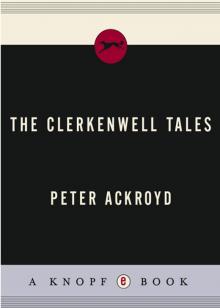 The Clerkenwell Tales
The Clerkenwell Tales The Canterbury Tales
The Canterbury Tales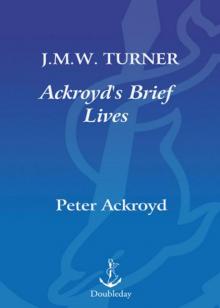 J. M. W. Turner
J. M. W. Turner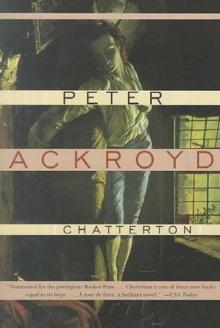 Chatterton
Chatterton The Canterbury Tales – A Retelling
The Canterbury Tales – A Retelling Alfred Hitchcock
Alfred Hitchcock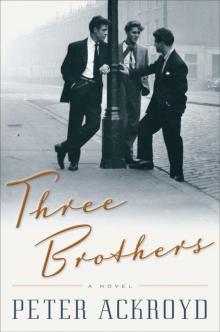 Three Brothers
Three Brothers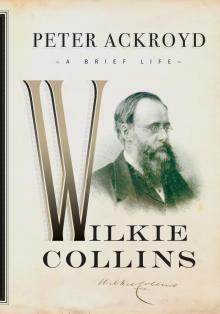 Wilkie Collins
Wilkie Collins Venice
Venice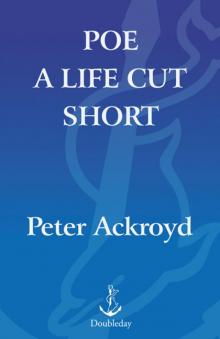 Poe
Poe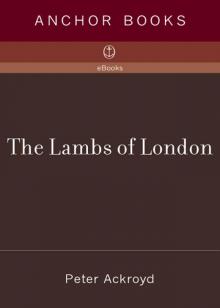 The Lambs of London
The Lambs of London London
London Queer City
Queer City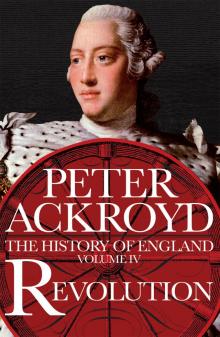 Revolution, a History of England, Volume 4
Revolution, a History of England, Volume 4 Venice: Pure City
Venice: Pure City Foundation
Foundation Thames
Thames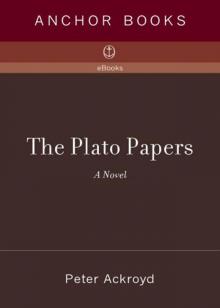 The Plato Papers
The Plato Papers The house of Doctor Dee
The house of Doctor Dee Rebellion: The History of England from James I to the Glorious Revolution
Rebellion: The History of England from James I to the Glorious Revolution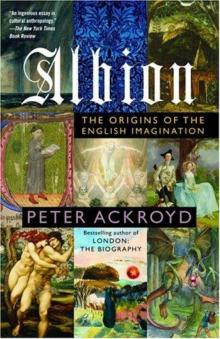 Albion: The Origins of the English Imagination
Albion: The Origins of the English Imagination The Fall of Troy
The Fall of Troy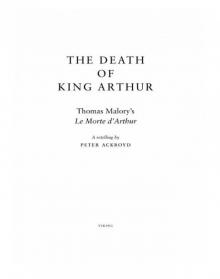 The Death of King Arthur
The Death of King Arthur The Trial of Elizabeth Cree
The Trial of Elizabeth Cree London: The Biography
London: The Biography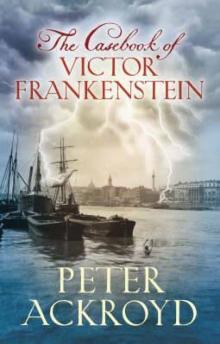 The Casebook of Victor Frankenstein
The Casebook of Victor Frankenstein Hawksmoor
Hawksmoor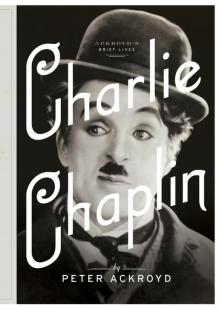 Charlie Chaplin
Charlie Chaplin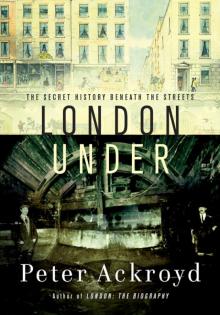 London Under
London Under